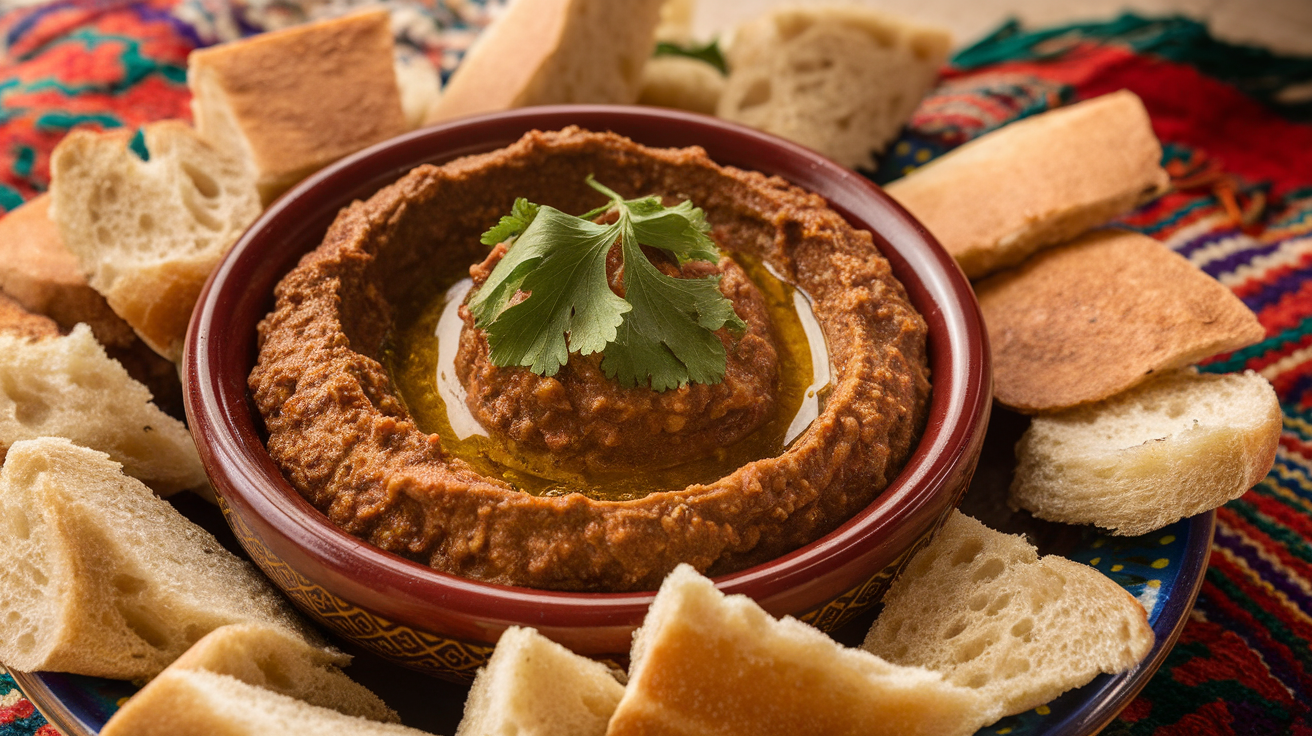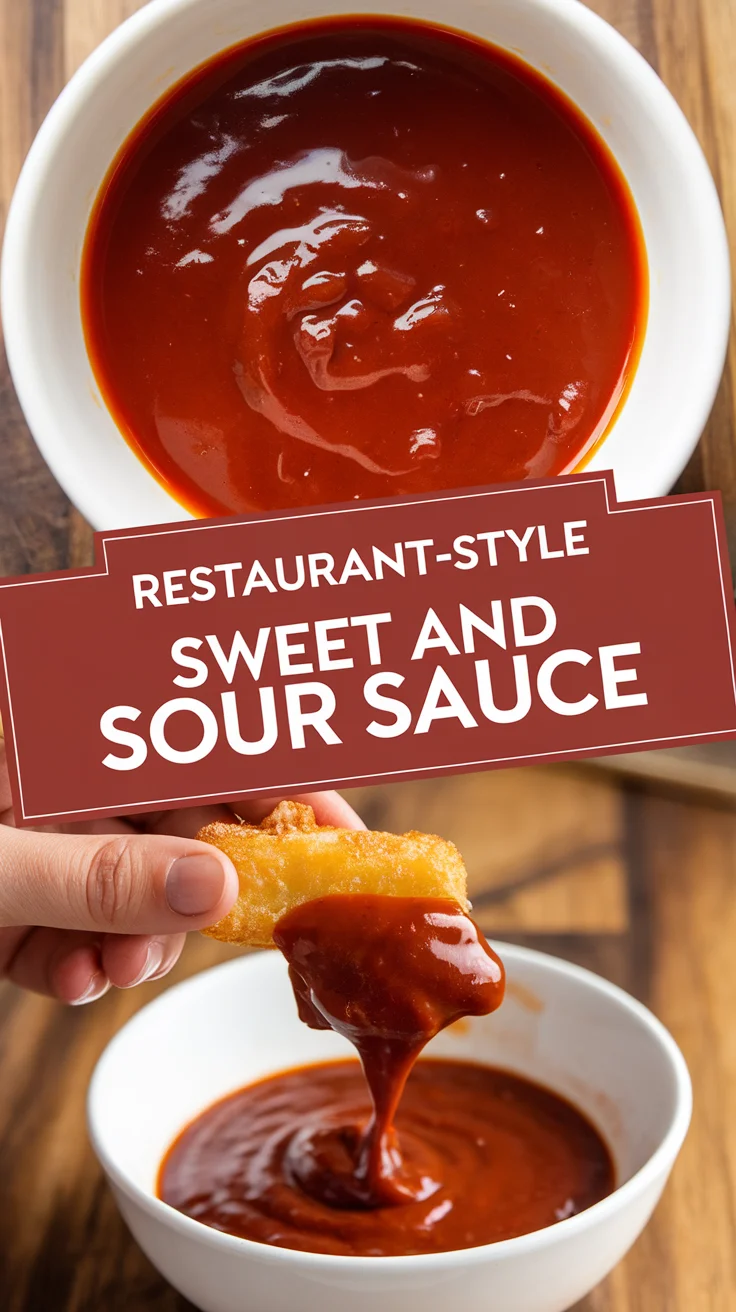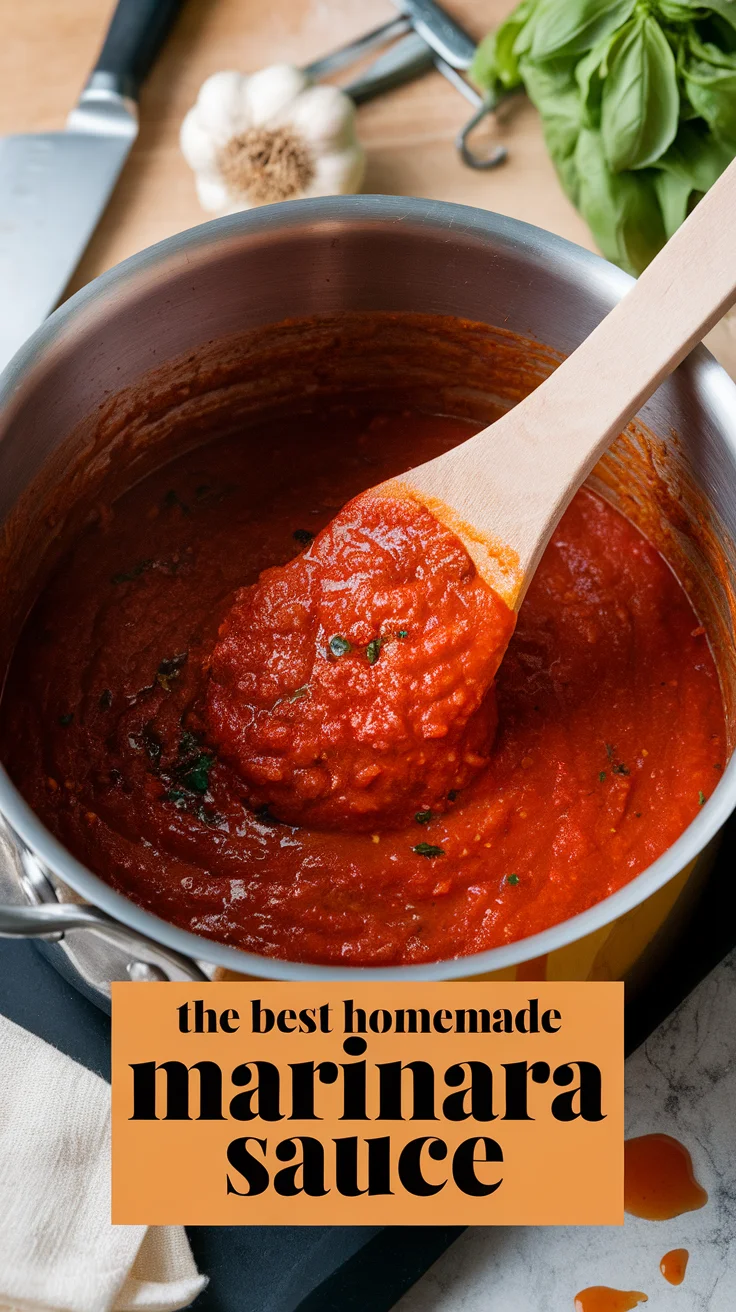Eggplants might get a bad rap as “that weird purple thing in the veggie aisle,” but let me tell you, they’re the ultimate culinary chameleons. Among the countless ways to celebrate this versatile vegetable, Zaalouk shines as one of the most iconic dishes in Moroccan cuisine—and arguably, the entire Mediterranean basin.
This warm, smoky, garlicky eggplant dip embodies everything that makes Mediterranean eggplant recipes so beloved: bold spices, vibrant colors, and a texture that’s both silky and rustic. If you’ve ever browsed eggplant salsa recipes or explored eggplant Turkish recipes, or even dipped into Spanish eggplant recipes et Middle Eastern eggplant recipes, you’ll recognize a shared love for transforming humble eggplant into mouthwatering dishes. But Zaalouk? It’s the Moroccan star that brings them all together.
What Is Zaalouk? Origins & Culinary Identity
Zaalouk (زعلوك) is a Moroccan cooked eggplant and tomato salad or dip, typically served as a starter or part of a mezze spread. It’s a warm, thick purée with smoky undertones, tangy tomatoes, garlic pungency, and an aromatic spice mix. This dish isn’t just food—it’s a cultural ritual, often shared communally around a table with bread for dipping, embodying Moroccan hospitality and flavor mastery.
The Root of the Name
The term “Zaalouk” reportedly derives from the Arabic root related to something slippery or smooth, perfectly describing the texture of this creamy dip. It’s simple yet sophisticated, like the smooth-talking cousin in your food family who always steals the spotlight.
The Eggplant’s Journey to Morocco
Eggplants originated in Asia—India and China—and migrated westward over centuries via trade routes, becoming staples in Mediterranean and Middle Eastern diets. Morocco, with its fertile lands and spice markets, adapted eggplant beautifully, creating dishes that mirror the country’s diverse cultural influences—from Arab, Berber, Andalusian to French colonial flavors.
The Magic of Zaalouk: Why It’s More Than Just a Dip
You might wonder—why bother with Zaalouk when baba ganoush or mutabbal exist in the Middle East? Here’s why:
- Roasted vs. Grilled: Zaalouk uses roasted or flame-grilled eggplants, giving a deep smoky flavor essential to Moroccan cuisine. This contrasts with some Mediterranean dips that rely more on tahini or yogurt.
- Tomato Integration: The generous use of tomatoes adds sweetness, acidity, and juiciness, balancing the earthiness of the eggplant.
- Spice Palette: Moroccan spices like cumin and paprika (sometimes Ras el Hanout) inject warmth and complexity without overwhelming the vegetable’s natural flavor.
- Versatility: Can be served hot, warm, or cold, on bread or alongside mains, making it an all-rounder.
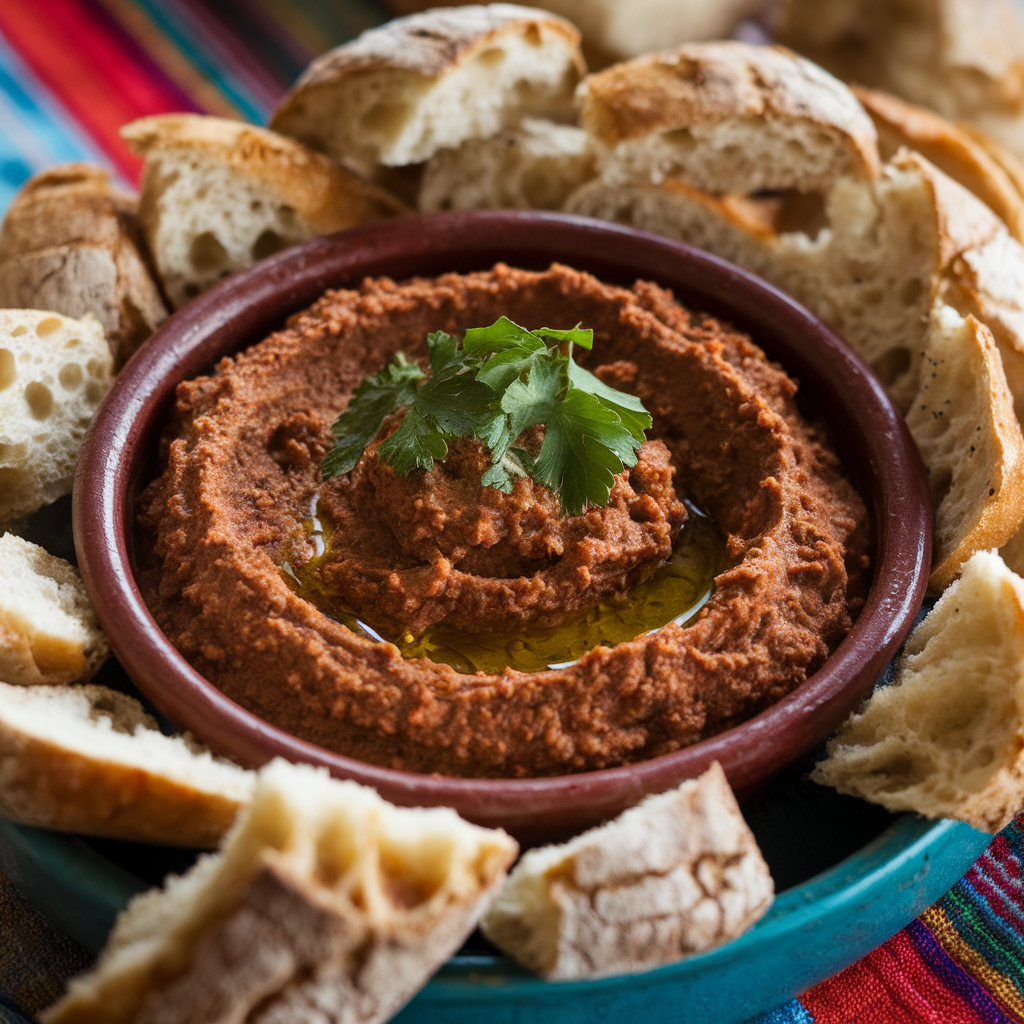
Essential Ingredients & Their Roles in Zaalouk Recipe
| Ingredient | Role in the Recipe |
|---|---|
| Eggplants | Base; provides creamy, smoky body and texture |
| Tomatoes | Moisture, acidity, sweetness |
| L'ail | Aroma and pungency |
| L'Huile D'Olive | Richness, smooth mouthfeel, flavor enhancer |
| Ground Cumin | Earthy warmth |
| Paprika | Sweet and smoky depth |
| Chili Flakes | Optional heat |
| Le Jus De Citron | Brightness and acidity to balance richness |
| Herbes Fraîches | Fresh finish and color |
The Science Behind Roasting Eggplants
Roasting eggplants over direct heat or in the oven transforms their bitter, spongy raw state into a sweet, tender, and smoky delight.
- Cell Wall Breakdown: Heat breaks down tough cell walls and fibers, making eggplant soft and easy to mash.
- Flavor Development: Maillard reactions and mild charring add complex smoky notes.
- Moisture Reduction: Roasting evaporates excess moisture, concentrating flavors.
If you steam or boil eggplants, they absorb too much water and lose that signature richness—so roasting is the key to authentic Zaalouk.
Step-by-Step Zaalouk Recipe — Extended Version
Ingrédients
- 2 medium eggplants (about 500-600g)
- 4 ripe tomatoes (or 1 can plum tomatoes, about 400g)
- 4 gousses d'ail, émincées
- 4 tablespoons extra virgin olive oil
- 1 ½ teaspoons ground cumin
- 1 ½ teaspoons sweet paprika (or smoked paprika if available)
- ½ teaspoon chili flakes or cayenne (adjust to heat preference)
- Sel et poivre noir fraîchement moulu, au goût
- Juice of 1 lemon (about 2 tablespoons)
- Fresh cilantro and/or flat-leaf parsley, chopped, for garnish
Instructions
1. Roast or Grill the Eggplants
Preheat oven to 220°C (425°F). Prick the eggplants with a fork all over (prevents bursting). Place on a baking tray and roast for 30–40 minutes, turning once, until the skin is blackened and the flesh is soft. Alternatively, roast over an open flame or grill for an authentic smoky flavor.
2. Prepare the Tomatoes
While eggplants roast, blanch tomatoes in boiling water for 1 minute, then plunge into cold water. Peel off skins and chop finely.
3. Peel and Mash the Eggplant
Once cool, peel the eggplants. The skin should slip off easily. Place the flesh in a bowl and mash roughly with a fork or potato masher, leaving some texture.
4. Sauté Aromatics
Heat olive oil in a large skillet over medium heat. Add minced garlic and sauté until fragrant (about 1 minute). Avoid browning garlic to prevent bitterness.
5. Cook Tomatoes and Spices
Add chopped tomatoes to the skillet with a pinch of salt. Simmer on medium-low heat, stirring occasionally, until tomatoes reduce and thicken (about 10–15 minutes). Stir in cumin, paprika, chili flakes, and freshly ground black pepper.
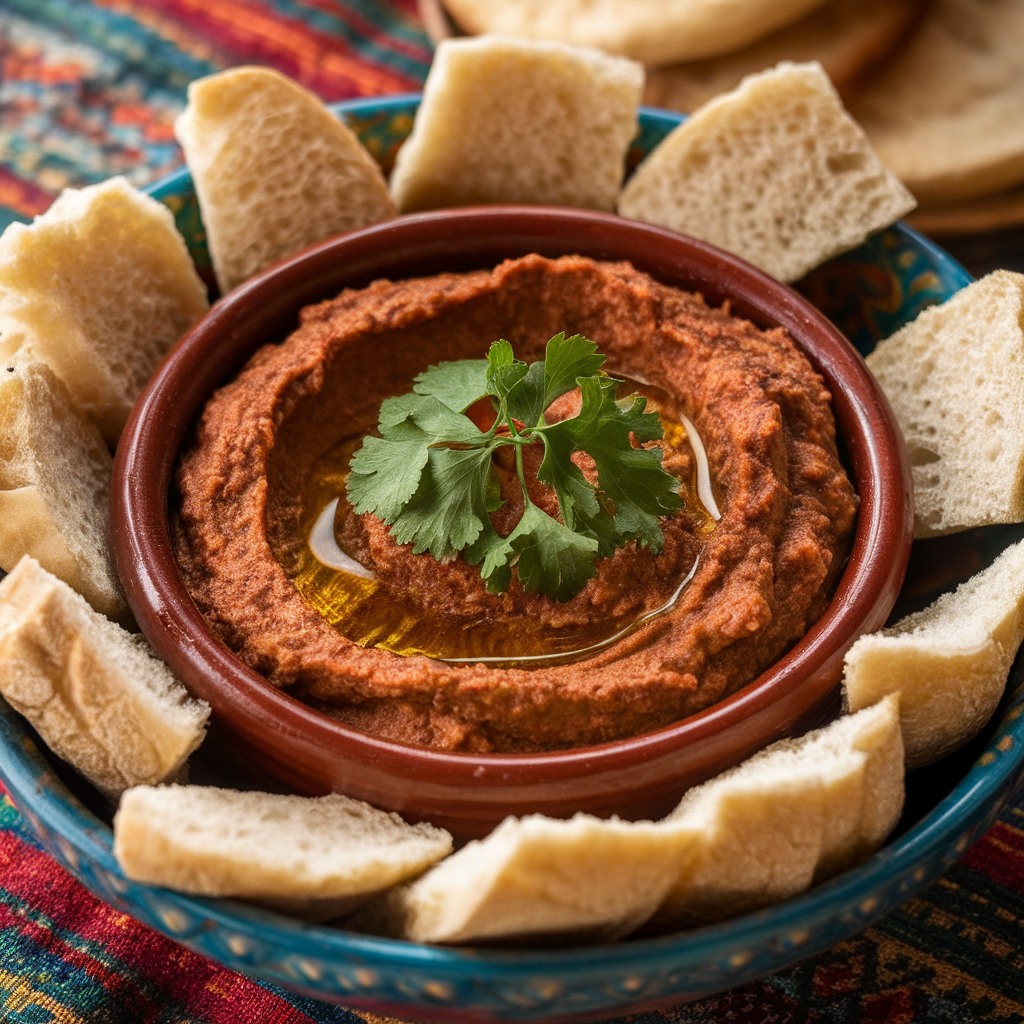
6. Combine Eggplant and Tomato Mixture
Add the mashed eggplant to the skillet. Mix well and cook gently for another 10–15 minutes, stirring occasionally, until the mixture thickens to a spreadable consistency.
7. Final Touches
Remove from heat. Stir in fresh lemon juice for acidity and brightness. Taste and adjust salt, pepper, or chili flakes as needed.
8. Serve and Garnish
Transfer to a serving bowl. Drizzle a little olive oil on top and sprinkle chopped fresh cilantro and parsley. Serve warm or at room temperature with warm bread.
Alternative Cooking Methods & Variations
- Pressure Cooker or Instant Pot: To speed up the process, eggplants and tomatoes can be cooked together under pressure and mashed afterward.
- Adding Spices: Some recipes call for Ras el Hanout, cinnamon, or coriander for extra Moroccan flair.
- Incorporating Harissa: For a spicy kick, stir in a spoonful of harissa paste.
- Nuts and Seeds: Garnish with toasted pine nuts or sesame seeds for texture contrast.
- Vegan Version: Zaalouk is naturally vegan and gluten-free, perfect for modern dietary needs.
How Zaalouk Compares to Other Mediterranean Eggplant Dips and Salsas
| Dish | Region | Texture | Key Flavor Component | Typical Serving Style |
|---|---|---|---|---|
| Zaalouk | Morocco | Smooth, chunky | Smoky eggplant & tomato | Warm dip or starter |
| Baba Ganoush | Middle East | Smooth, creamy | Tahini, lemon, garlic | Cold dip |
| Imambayildi | Turkey | Baked whole | Onion, tomato, olive oil | Main or side dish |
| Escalivada | Spain (Catalonia) | Des légumes grillés | Smoky roasted veggies | Cold salad or tapa |
| Pisto | Spain | Stewed veggies | Tomato, pepper, zucchini | Side dish or tapa |
| Mutabbal | Levant | Smooth, creamy | Tahini, yogurt | Cold dip |
Serving Zaalouk: Beyond the Traditional
Moroccan Starters & Mezze
Zaalouk fits perfectly on a Moroccan starters table, accompanied by:
- Khobz: Traditional Moroccan bread for dipping.
- Olives: Spiced or preserved olives add a briny counterpoint.
- Pickled Vegetables: For acidity and crunch.
- Harira: Moroccan spiced lentil soup.
As an Eggplant Side Dish Recipe
Pair Zaalouk with:
- Grilled lamb or chicken kebabs
- Couscous or rice dishes
- Roasted root vegetables
Fusion Ideas
- Eggplant Toast: Spread Zaalouk on toasted sourdough, top with feta and herbs.
- Wraps & Sandwiches: Use as a flavorful spread in veggie wraps.
- Pasta Sauce: Mix with cooked pasta for a smoky Mediterranean twist.
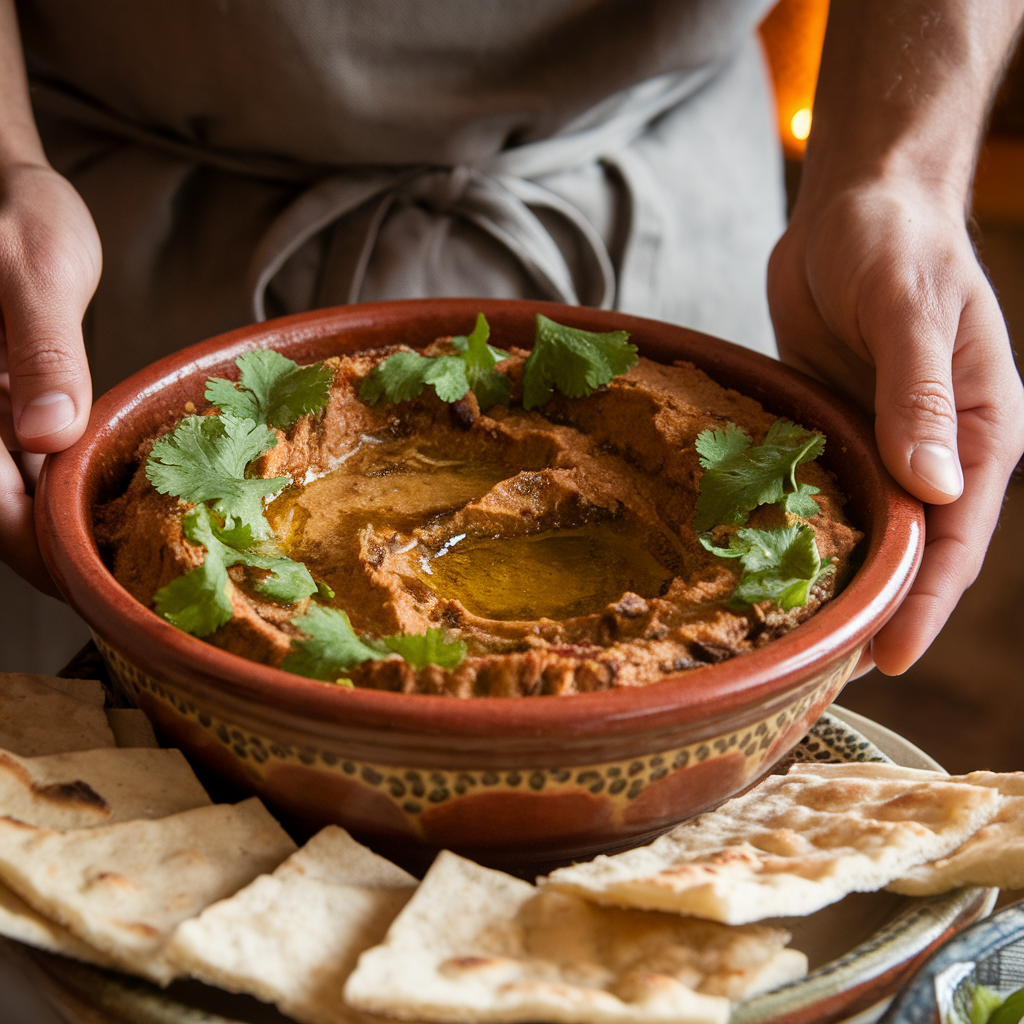
Health Benefits & Nutritional Profile
Eggplants are a powerhouse:
- Rich in les antioxydants like nasunin, which protects brain cell membranes.
- Good source of dietary fiber, aiding digestion.
- Low in calories—perfect for weight management.
- Contain vitamins B1, B6, and K and minerals like manganese and potassium.
Olive oil adds heart-healthy les graisses mono-insaturées, while garlic and spices bring anti-inflammatory and immune-supportive properties.
Storage Tips and Shelf Life
- Store in an airtight container in the fridge for up to 4 days.
- Flavors deepen overnight—Zaalouk often tastes better the next day.
- Freeze in small portions for up to 3 months, but texture might change slightly.
Fun Facts and Culinary Trivia
- The dish is sometimes called “Eggplant Salsa” outside Morocco due to its saucy texture.
- The smoky flavor traditionally comes from cooking over charcoal or open flame.
- In Morocco, Zaalouk is often served during Ramadan as a light, nutritious starter.
- The recipe varies slightly from region to region—some add green peppers or use more garlic.
Foire Aux Questions
Can I use canned eggplants instead of fresh?
Fresh is best. Canned eggplants tend to be mushy and lack the smoky flavor essential for authentic Zaalouk.
Is Zaalouk gluten-free?
Yes, naturally gluten-free unless served with bread containing gluten.
Can I make Zaalouk ahead?
Absolutely! It stores well and tastes even better after resting.
Can I substitute lemon juice with vinegar?
Yes, a mild vinegar like apple cider works if you want a different acid profile.
Conclusion: Why Zaalouk Is a Must-Try for Food Lovers Everywhere
Zaalouk is the kind of dish that stays with you—not just because it tastes incredible but because it carries history, culture, and the vibrant soul of Morocco in every bite. If you’re a fan of Mediterranean eggplant recipes, intrigued by smoky, savory dips, or just looking to expand your repertoire beyond baba ganoush and classic hummus, Zaalouk will be your new obsession.
It’s healthy, easy, and endlessly adaptable—whether you want a vegan starter, a spicy side dish, or an impressive dip to wow friends, Zaalouk ticks all boxes.
So grab your eggplants, fire up the oven or grill, and get ready to embark on a flavor-packed adventure with this iconic Moroccan Mediterranean eggplant dip. Your palate—and your guests—will thank you.
